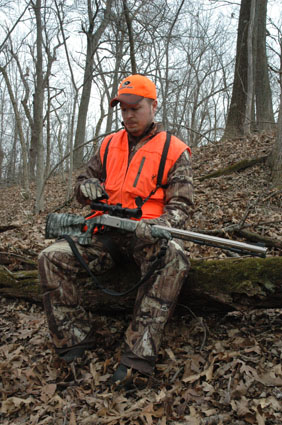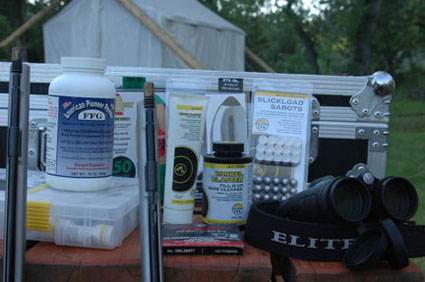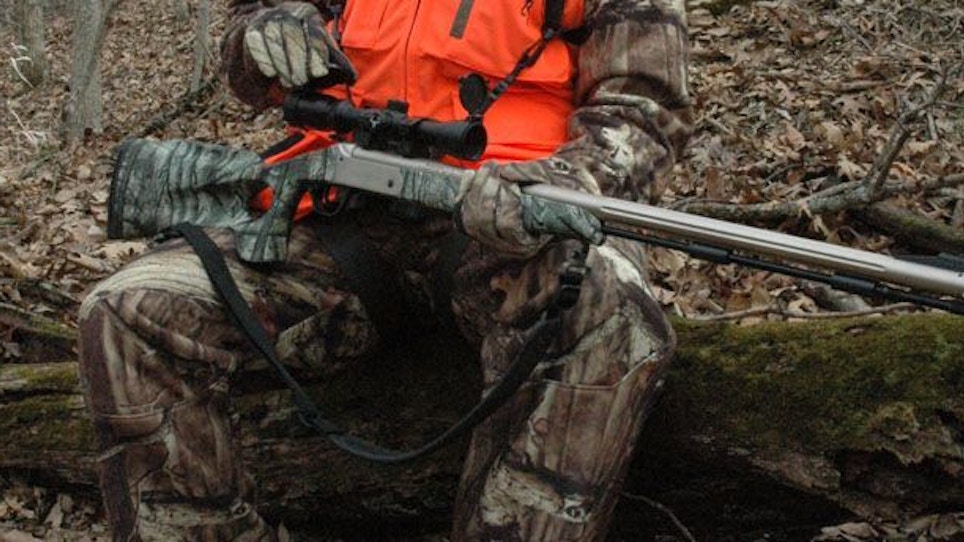 Blackpowder enthusiasts aren’t immune. Back in The Day, we muzzleloaders had only one type of powder, a couple gun-makers, and three or four different projectiles. That’s changed. In a recent Cabela’s catalog alone, there were eight pages — EIGHT — dedicated solely to muzzleloaders and accessories. Five of these pages were strictly firearms, with more than 20 various in-line options from which to choose. One entire page was projectiles. Half a dozen brands of powder, none of which were traditional blackpowder.
Blackpowder enthusiasts aren’t immune. Back in The Day, we muzzleloaders had only one type of powder, a couple gun-makers, and three or four different projectiles. That’s changed. In a recent Cabela’s catalog alone, there were eight pages — EIGHT — dedicated solely to muzzleloaders and accessories. Five of these pages were strictly firearms, with more than 20 various in-line options from which to choose. One entire page was projectiles. Half a dozen brands of powder, none of which were traditional blackpowder.
It all made me wonder: Where’s the novice muzzleloading hopeful to begin in terms of selecting an in-line rifle, powder, projectile and accessories? The choices are daunting, to say the least; however, there are steps one can take that will simplify the entire process.
The Guns
All in-lines, regardless of make, model or appearance, function in essentially the same manner. A source of ignition or flame is directed onto a propellant upon which rests a projectile. The resulting explosion and subsequent gases created push said projectile out of the barrel, past the muzzle and downrange toward a target. Everything else pertaining to that firearm, with the exception perhaps of caliber, is based on visual appearance, personal preference and ease of use.
The Calibers
Today’s muzzleloading hunter has, for all intents and purposes, three options in regards to caliber — the .45, the .50, and the .54. A quick, flat shooter, the .45 can be an excellent choice, though the lighter bullet weights don’t allow much room for shot placement errors. But in experienced hands, the .45 is certainly capable of taking big game up to and including elk.
The .50-caliber is without question the most oft-seen rifle in the field. The manufacturers have long realized this popularity, and have responded by creating a vast selection of firearms and projectiles designed to meet the needs of all shooters, regardless of target. Loaded light, the .50 is easy on the shoulder, and with range work, extremely accurate. Pumped up, the caliber maintains the velocities and energies necessary to take any type of North American big game out to — and some will say beyond — 200 yards.
My first whitetail was taken with a Thompson/Center Hawken in .54-caliber. So, too, was my wife’s first Roosevelt elk. Since that time, however, I haven’t fired the gun; my wife hasn’t fired hers again either. Elk hunters might swear by the big .54’s heavy bullets and subsequent on-target performance, but I personally believe that most hunters would be better served by either a souped-up .45 or a .50-caliber.
The Ignition Systems
The choices here are three — #11 caps, 209 shotgun primers, or in the case of CVA’s innovative Electra, an electrical spark. My thought is this is a matter of personal preference, as all three ignition systems are incredibly reliable in terms of putting fire to powder. Myself, I’ve switched everything to 209 primers. It’s simple and dependable, and all my guns are then on the same page should it be necessary to switch or swap in mid-hunt.
The Powders
 In recent years, new players have entered the blackpowder field with any number of synthetic propellants, but it’s Hodgdon, with its Pyrodex and Triple Seven, who appear to be getting the most at-bats. I shoot two 50-grain Pyrodex pellets in all of my rifles; some hunters opt for three pellets. It is said, and up for consideration, that loose (granulated) powder offers the most consistent chamber pressures and velocities, thus resulting in improved accuracy. Only time on the range, coupled with experimentation, will show this to be fact.
In recent years, new players have entered the blackpowder field with any number of synthetic propellants, but it’s Hodgdon, with its Pyrodex and Triple Seven, who appear to be getting the most at-bats. I shoot two 50-grain Pyrodex pellets in all of my rifles; some hunters opt for three pellets. It is said, and up for consideration, that loose (granulated) powder offers the most consistent chamber pressures and velocities, thus resulting in improved accuracy. Only time on the range, coupled with experimentation, will show this to be fact.
The Projectiles
Here’s the stickler in choosing muzzleloading projectiles — two identical firearms might prove radically different from a performance standpoint when loaded with exactly the same bullet. You must find which bullet, including weight, configuration and sabot style, works best in your particular muzzleloader. My Knight Long Range Hunter, for instance, handles 290-grain boattails exceptionally well. My Remington Genesis and Optima Elite, however, have proved most accurate shooting 295-grain PowerBelt AeroTip Bullets over two 50-grain Pyrodex pellets. Interestingly enough, there seems to be no change in point of impact when switching between 295-grain AeroTips and a like-weight HP (hollow point) style PowerBelt. How do I know that? Range time.
The Bottom Line
The bottom line when it comes to choosing an in-line is relatively simple. Set a price point, determine how — that is, for what game animals — the firearm is to be used, do your homework on-line or via your friendly neighborhood sporting goods dealer, spend your folding money, and then, most importantly, set aside ample time on the range. Experimentation, particularly with bullets, is the key to achieving accuracy and consistency. And don’t forget that this is supposed to be enjoyable; it’s NOT work!






